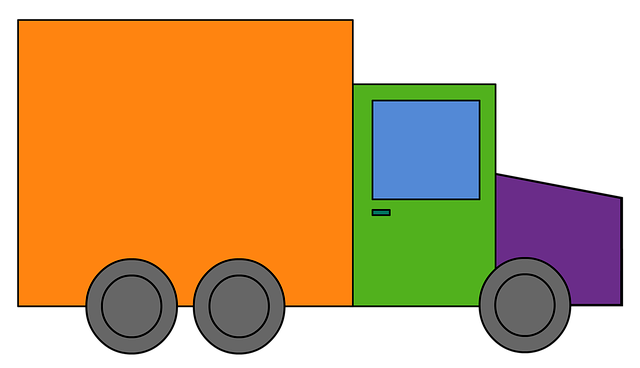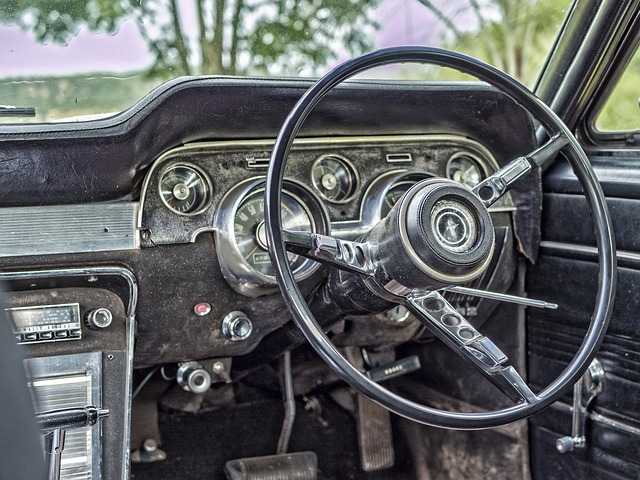Learn how to register your car in California with our step-by-step guide. Understanding the state’s requirements for car registration starts with knowing the importance of a Vehicle Identification Number (VIN) check. You’ll need to gather essential documents, perform a VIN verification, choose the right registration type, and submit your application along with any required fees. Simplify the process today and hit the road legally!
- Understand California Car Registration Requirements
- Gather Necessary Documents for VIN Verification
- Perform Vehicle Identification Number (VIN) Check
- Choose an Appropriate Registration Type
- Submit Application and Pay Fees
Understand California Car Registration Requirements

Before registering your car in California, it’s crucial to understand the state’s specific requirements. One vital aspect is ensuring accurate and up-to-date vehicle identification number (VIN) verification. The VIN is a unique code that identifies your car, and proper documentation is essential for a successful registration process. In California, this often involves submitting a completed Form MV-59, which requires detailed information about the vehicle’s history and current condition.
Additionally, you may need to undergo a vin inspection or use a mobile vin verification service to confirm the vehicle’s authenticity and identify any potential issues. This step is particularly important for ensuring compliance with California’s strict regulations. A valid and accurate VIN ensures your car meets all necessary safety and environmental standards, streamlining the registration process and preventing future complications.
Gather Necessary Documents for VIN Verification

Before you begin the car registration process in California, it’s crucial to gather all the essential documents required for VIN (Vehicle Identification Number) verification. This step is a critical part of ensuring your vehicle complies with state regulations. You’ll need to provide proof of ownership, which can be done through a certificate of title or a bill of sale. Additionally, have your vehicle’s registration papers from the previous state ready, if applicable. These documents serve as a foundation for the verification process.
For convenience, many individuals opt for a mobile vin verifier or conduct a vin inspection themselves. This involves checking the VIN on various parts of the vehicle to ensure it matches the one listed in the documentation. Some states allow this method as a way to streamline the registration process. Ensure that all details align accurately to pass the California VIN verification and avoid any potential delays in registering your car.
Perform Vehicle Identification Number (VIN) Check

Before registering your car in California, performing a Vehicle Identification Number (VIN) check is a crucial step. This process involves verifying the authenticity and history of your vehicle to ensure it meets all legal requirements. You can conduct a VIN verification through various official channels, including online platforms and local government offices. The state’s Department of Motor Vehicles (DMV) offers services for this purpose, allowing you to cross-reference the provided VIN with records to detect any discrepancies or potential issues.
A mobile vin verifier or mobile vin inspection app can also be employed for convenience. These tools enable you to check your car’s history remotely by simply inputting the VIN number into a digital platform. This modern approach streamlines the process, saving time and potentially uncovering important details about previous ownership, maintenance records, and any reported accidents related to the vehicle. Ensuring accurate information is key when registering a car in California.
Choose an Appropriate Registration Type

When registering your car in California, understanding the different registration types is crucial. The appropriate choice depends on various factors, including vehicle age, intended use, and personal circumstances. One key consideration is whether to opt for a traditional in-person visit to a DMV office or leverage modern alternatives like a mobile VIN verifier for a more convenient experience.
For newer vehicles, an individual registration might be the best fit as it typically involves fewer documentation requirements compared to historical cars. If your vehicle has unique characteristics or is considered a classic, you may need to explore specialized registration options. Always ensure proper vin verification through a reliable mobile VIN inspection service to streamline the process and avoid potential issues down the line.
Submit Application and Pay Fees

After gathering all the necessary documents and ensuring your vehicle meets California’s requirements, it’s time to submit your application and pay the registration fees. This crucial step involves filling out the appropriate forms, which can be done online or in person at a DMV field office. You’ll need to provide your vehicle identification number (VIN) for verification purposes, making sure it aligns with California’s standards. A mobile vin inspection or vin inspection conducted by a certified professional can ensure this process is seamless and accurate.
During the submission, you’ll be required to pay several fees, including a registration fee, vehicle license fee, and possibly other applicable charges like a title transfer fee if applicable. Once your application is approved, California’s Department of Motor Vehicles (DMV) will issue your vehicle registration, allowing you to legally operate your car on the state’s roads. Don’t forget that proper documentation and adherence to vin verification protocols are essential for this step to go smoothly.
Registering a car in California involves understanding specific requirements, gathering essential documents, and completing a VIN verification process. By following these steps—from fulfilling identification needs to selecting the right registration type—you’ll ensure your vehicle is legally registered and ready for California’s roads. Don’t overlook the importance of accurate vin verification during this process.



